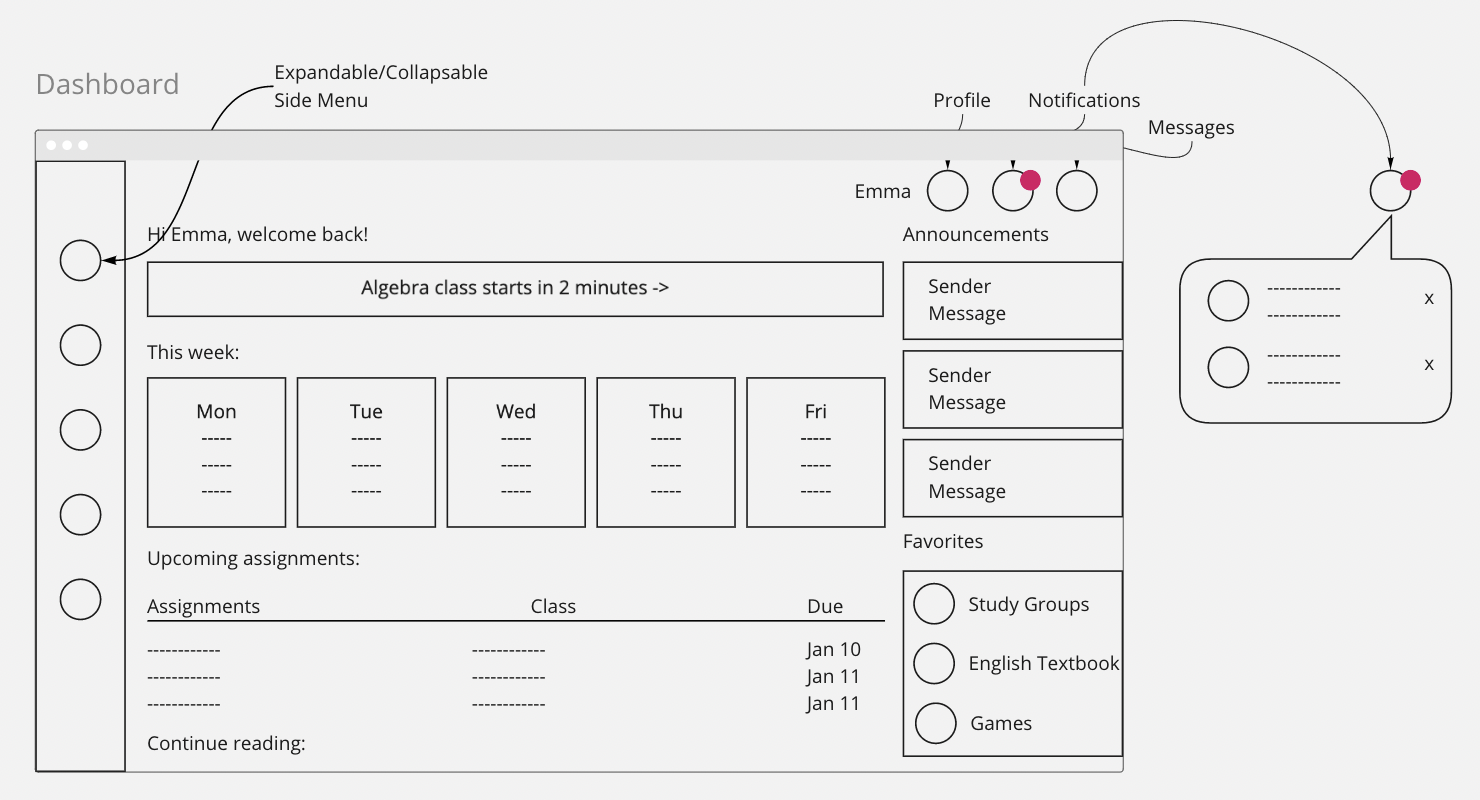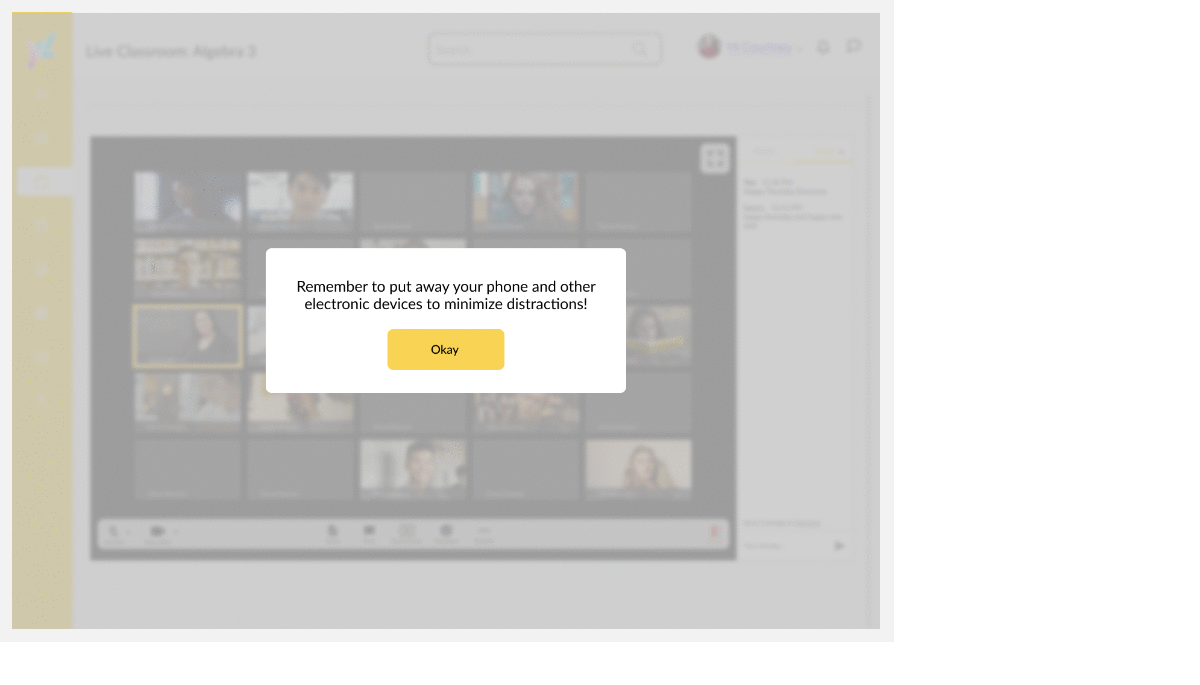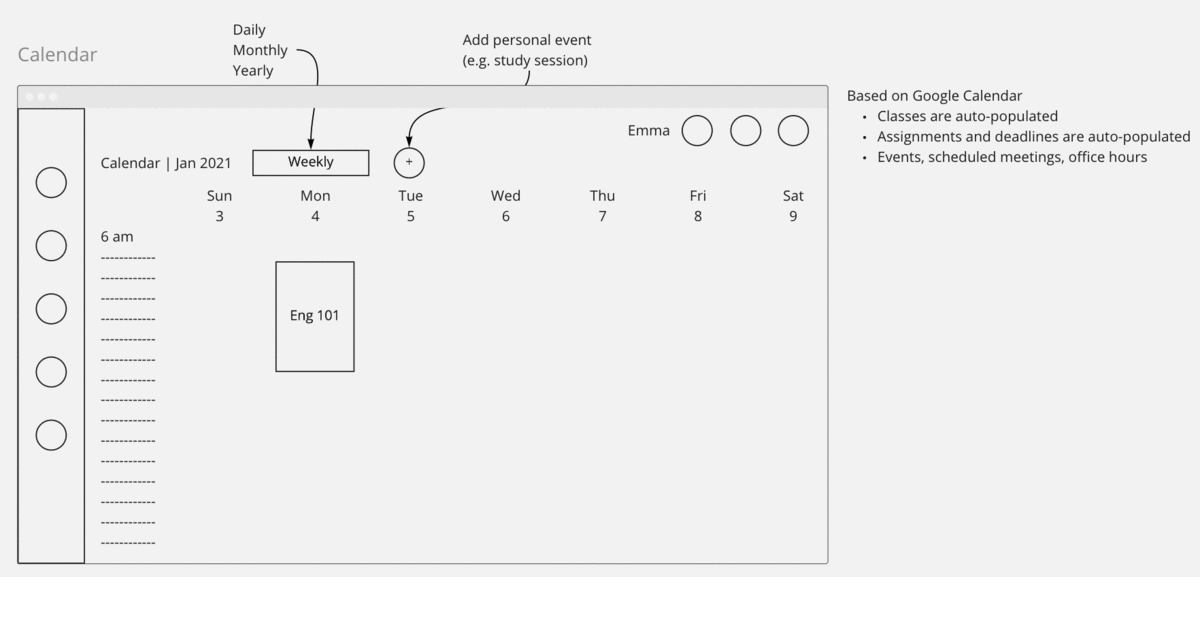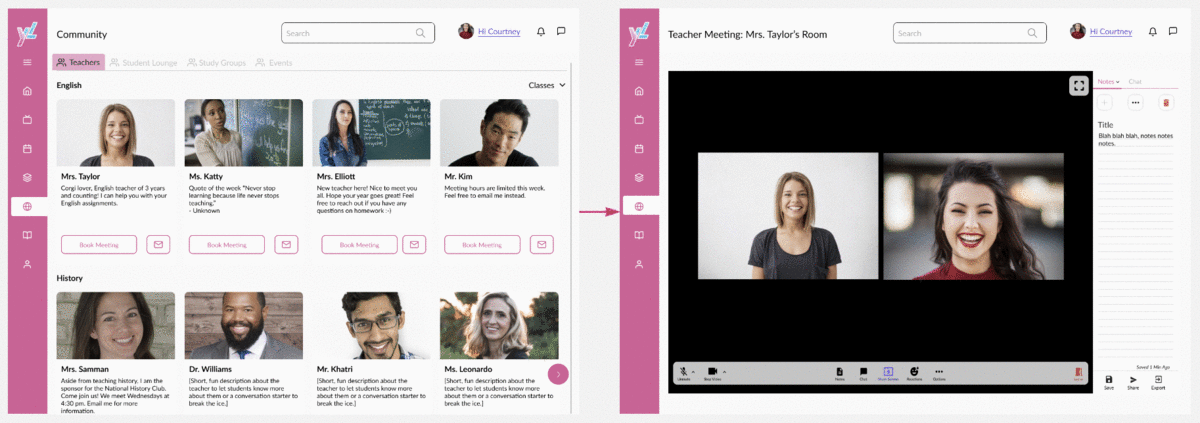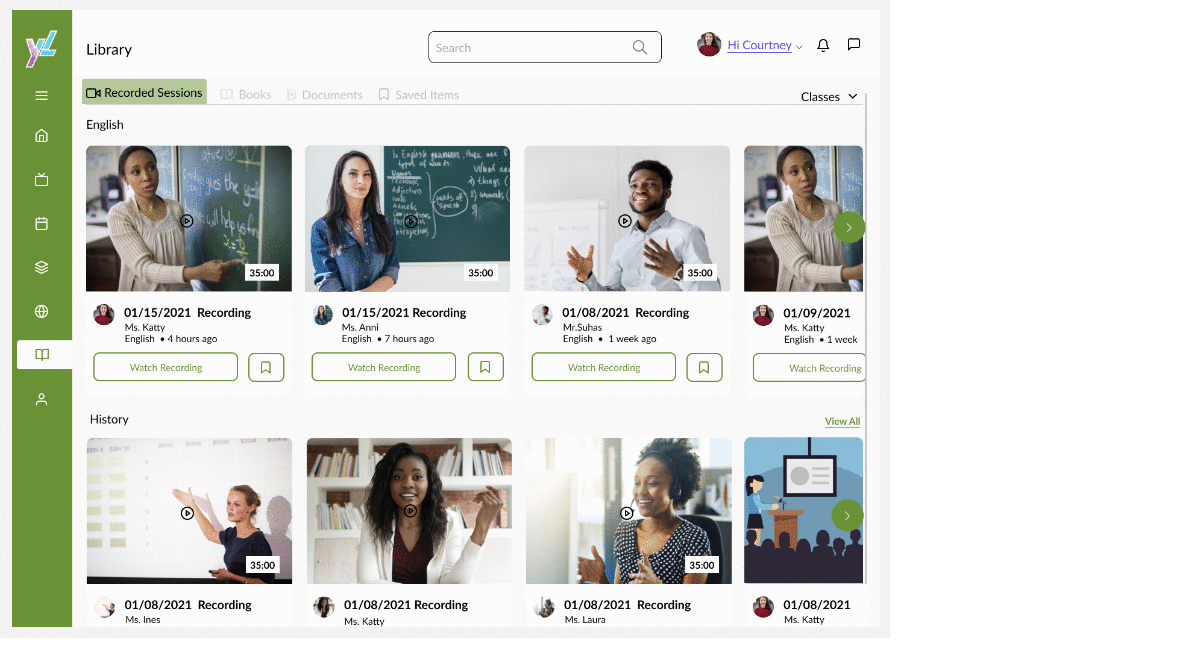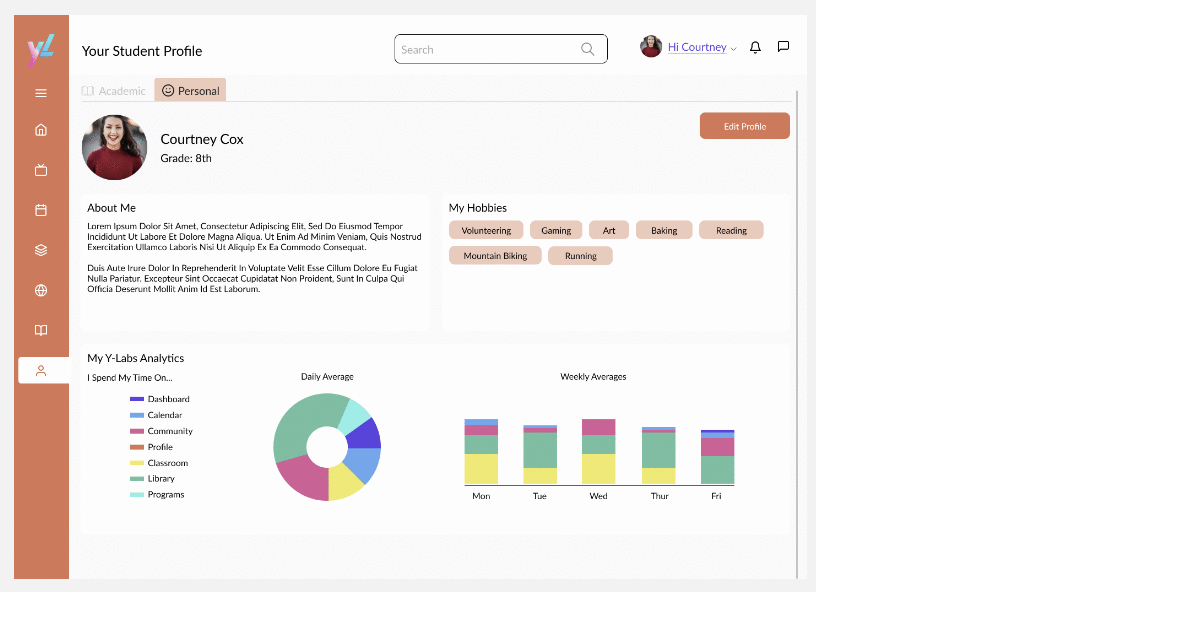Ideate & Design
With three designers, we determined the four most critical pages to design from the user stories we gathered: live classroom, library, community, and calendar. Over a course of a couple of brainstorming sessions, we created user flows for each user story.
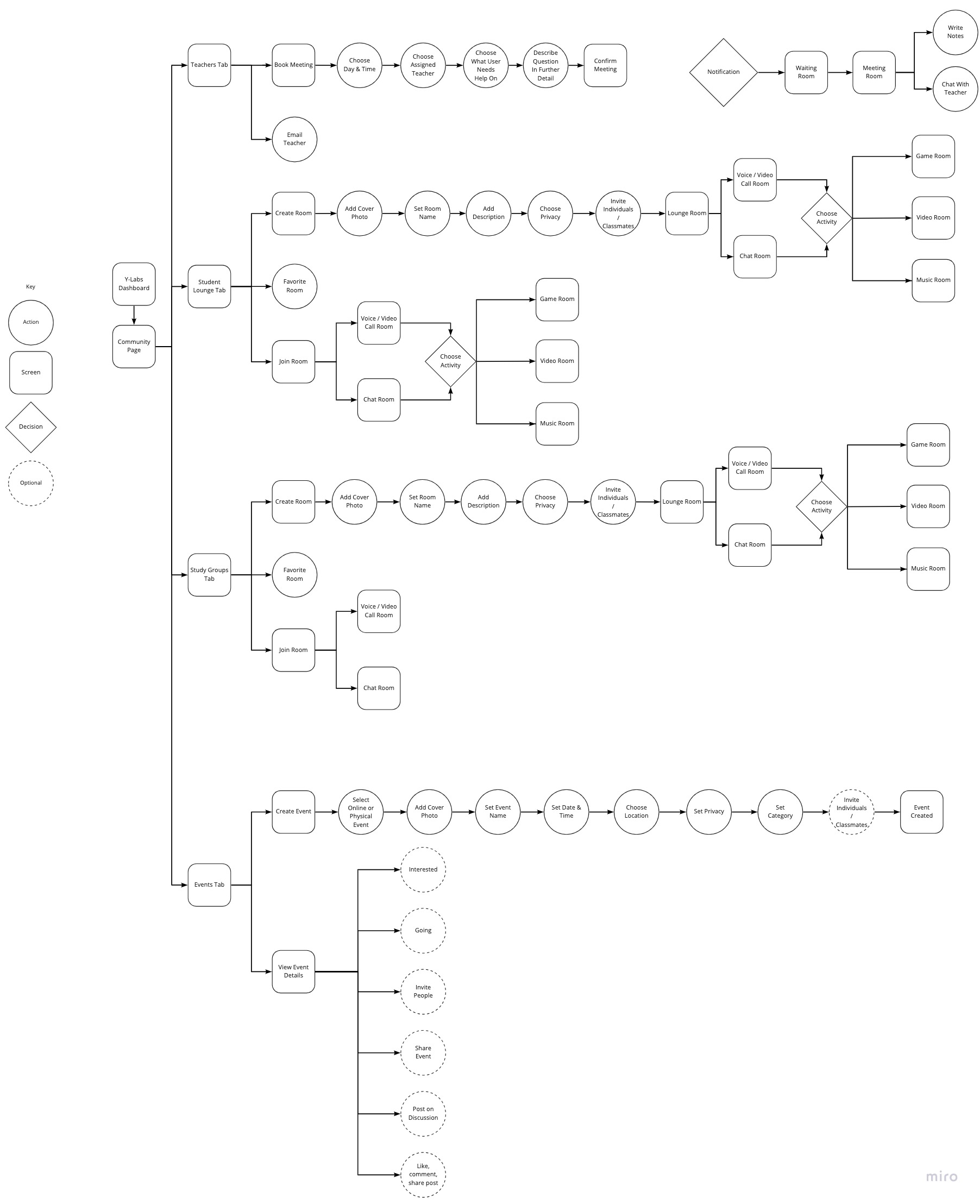 A user flow we did for the Community page.
A user flow we did for the Community page.
To maximize efficiency, we split the work among us, and circled back during each meeting to unify our designs, ensuring that our designs stayed consistent.
Since we were unable to gather participants in a short amount of time, we checked in with the consultant and co-founder daily for a week to work from low-fidelity to high-fidelity to ensure our design stayed true to our goals.
Check out our before and after designs! We didn't have time to design the Dashboard or Programs screens, so those don't transition :(
User Testing
To evaluate the new platform on Y-Labs, we conducted a usability test with a current student. This allowed us to test what we designed before we left to see if it fit at least one user’s needs.
Our test user gave us great feedback on small changes that would have the most impact on their experience, such as limiting the amount of people in a chatroom in the Community page, and consolidating all classroom material (e.g. school-provided textbooks and student-purchased textbooks) into the Library page. Overall, the user enjoyed the platform!
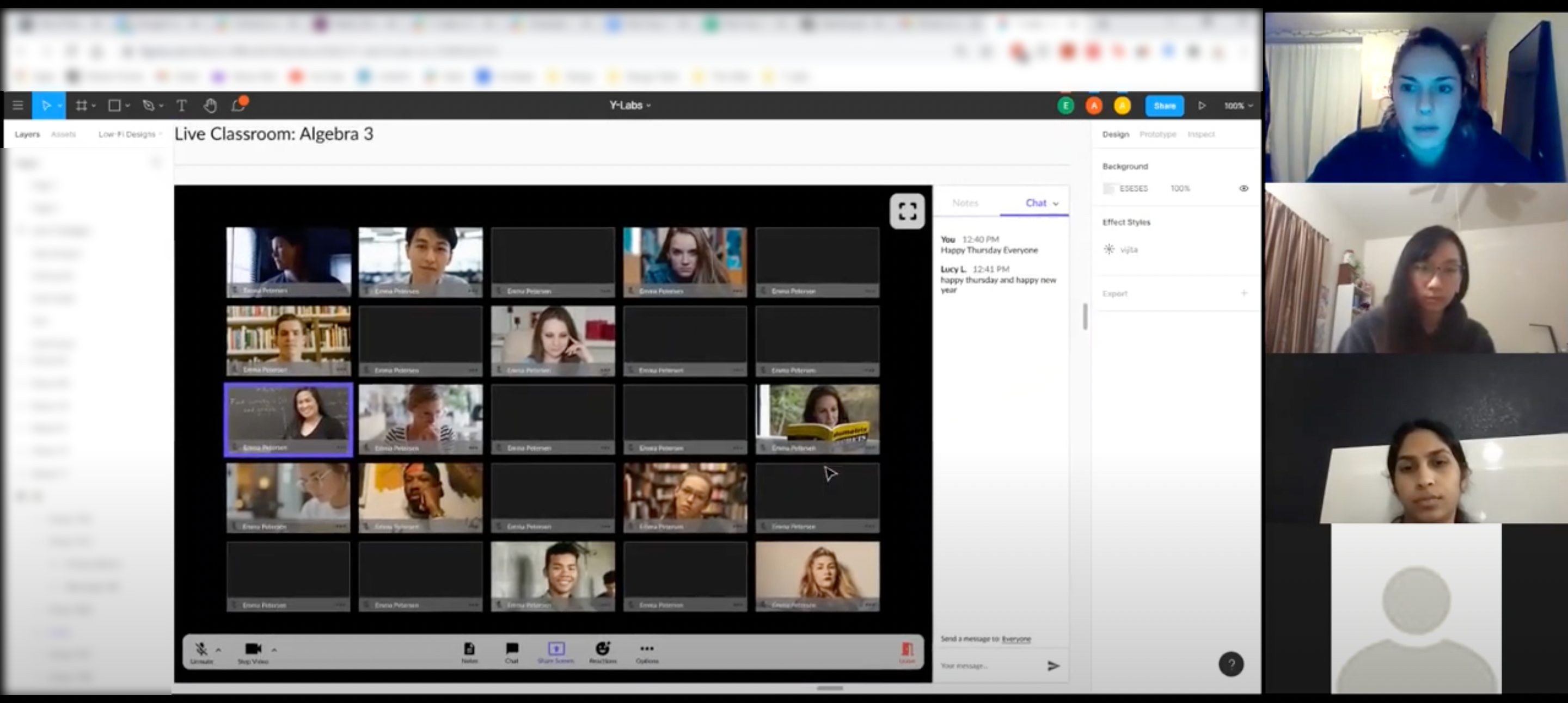 “I really liked the features. I think having all the apps in one platform is a really good idea, and I would use [Y-Labs], especially right now.” - A.L.
“I really liked the features. I think having all the apps in one platform is a really good idea, and I would use [Y-Labs], especially right now.” - A.L.
Taking what information we had from that user, and looking back on our research, we made adjustments on our wireframes.
Final Adjustments
As we shared the information with the rest of the team, our finishing touch was aesthetic: improving the color palette.
Overall, we thought the monochromatic purple colors the previous designer had was bland and did not fit into the message Y-Labs was trying to convey: remote learning doesn’t have to be boring. So, we played around with the idea of a playful rainbow palette, where every page would have a different color to evoke different types of emotion.
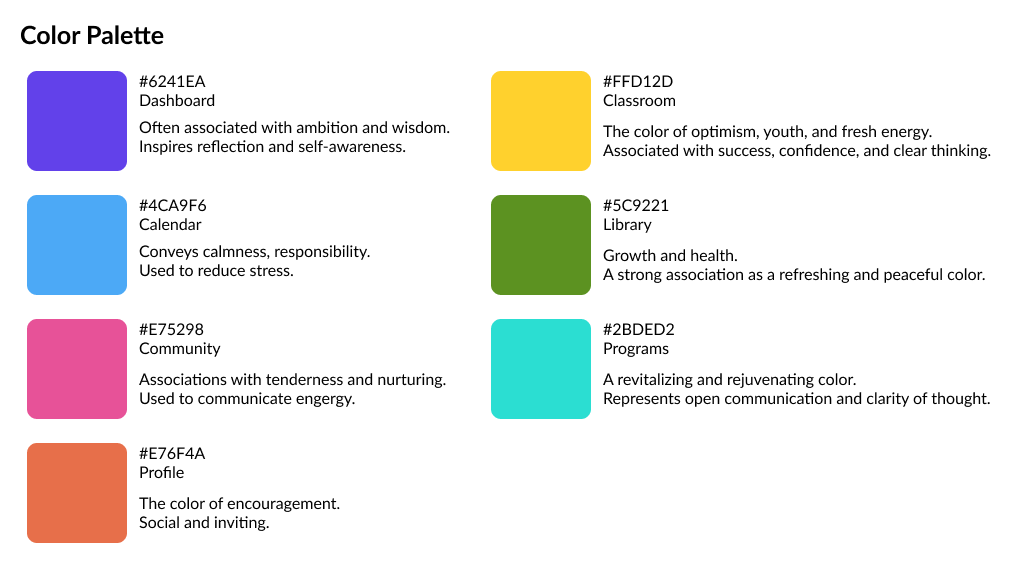
We presented this concept on our last day, which was met with mostly positive feedback. If we were to work on this project further, we would change the sidebar to a more neutral color to pull the platform together.
Because this platform has not been released yet, I am unable to host a public prototype.
Reflections
What did I learn?
Communication is key when working with a team. There was a lot of time we could have saved if we just reached out to each other before we began designing something, such as discussing the colors, to clear up confusion and minimize wasting time. In addition, we could only meet for about an hour a day due to all of our busy schedules, so setting a proper agenda would’ve helped to maximize each discussion.
Next steps?
Due to time constraints, I was only able to work with the Y-Labs Ventures team to make wireframes for the most crucial pages. The next steps are to formally establish the color palette, continue making wireframes for the rest of the pages, and test the design again, but this time with more users.
Although five weeks was not nearly enough to accomplish everything I had envisioned for this project, I am grateful that Springboard and Y-Labs gave me the opportunity to collaborate with other designers and share my ideas. It was exciting to build a product that could potentially help a lot of students feel more connected, especially in the midst of a pandemic.
Now, it’s in the hands of Y-Labs and their designers to continue the project. I can’t wait to see the final product!

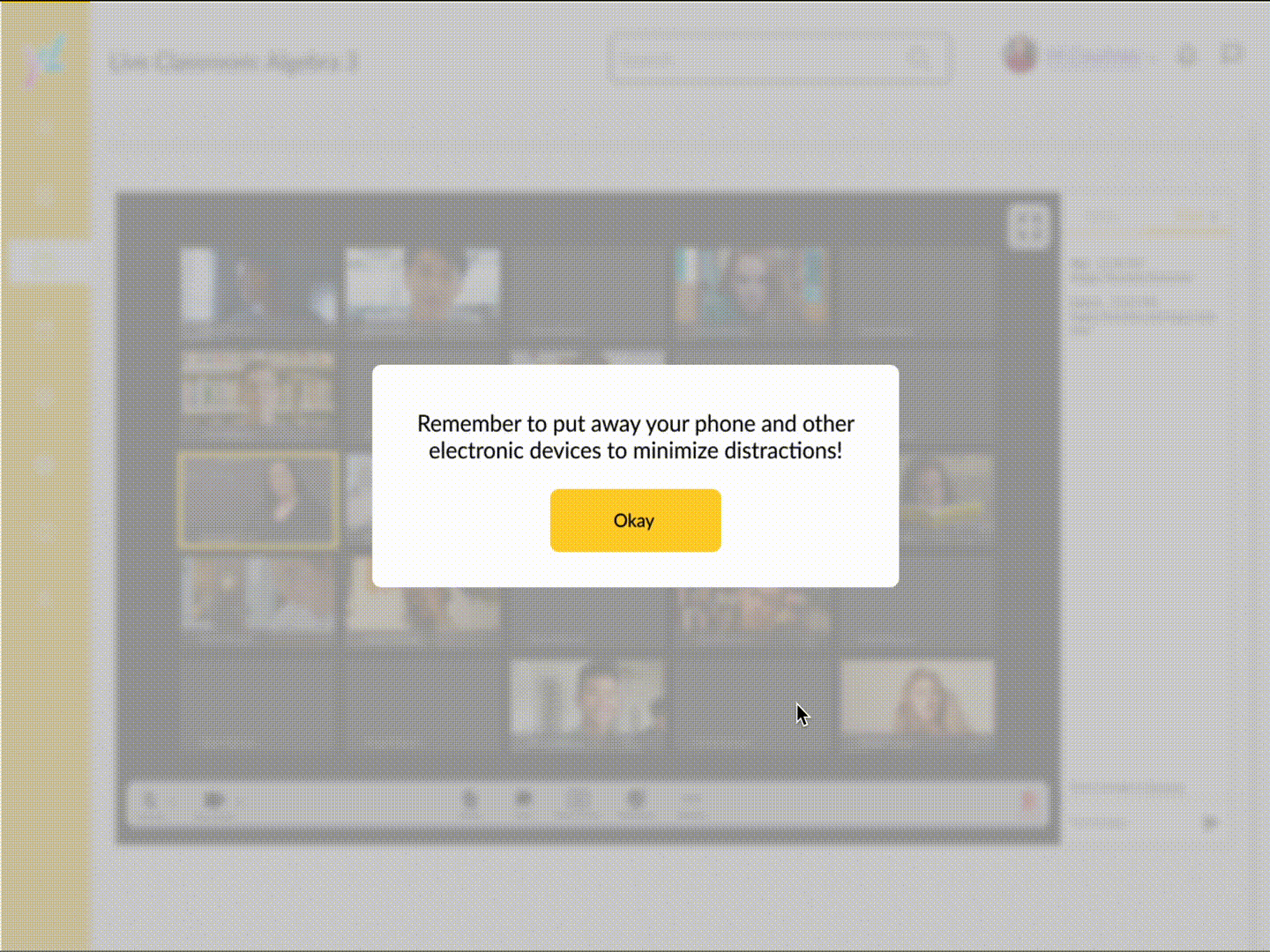
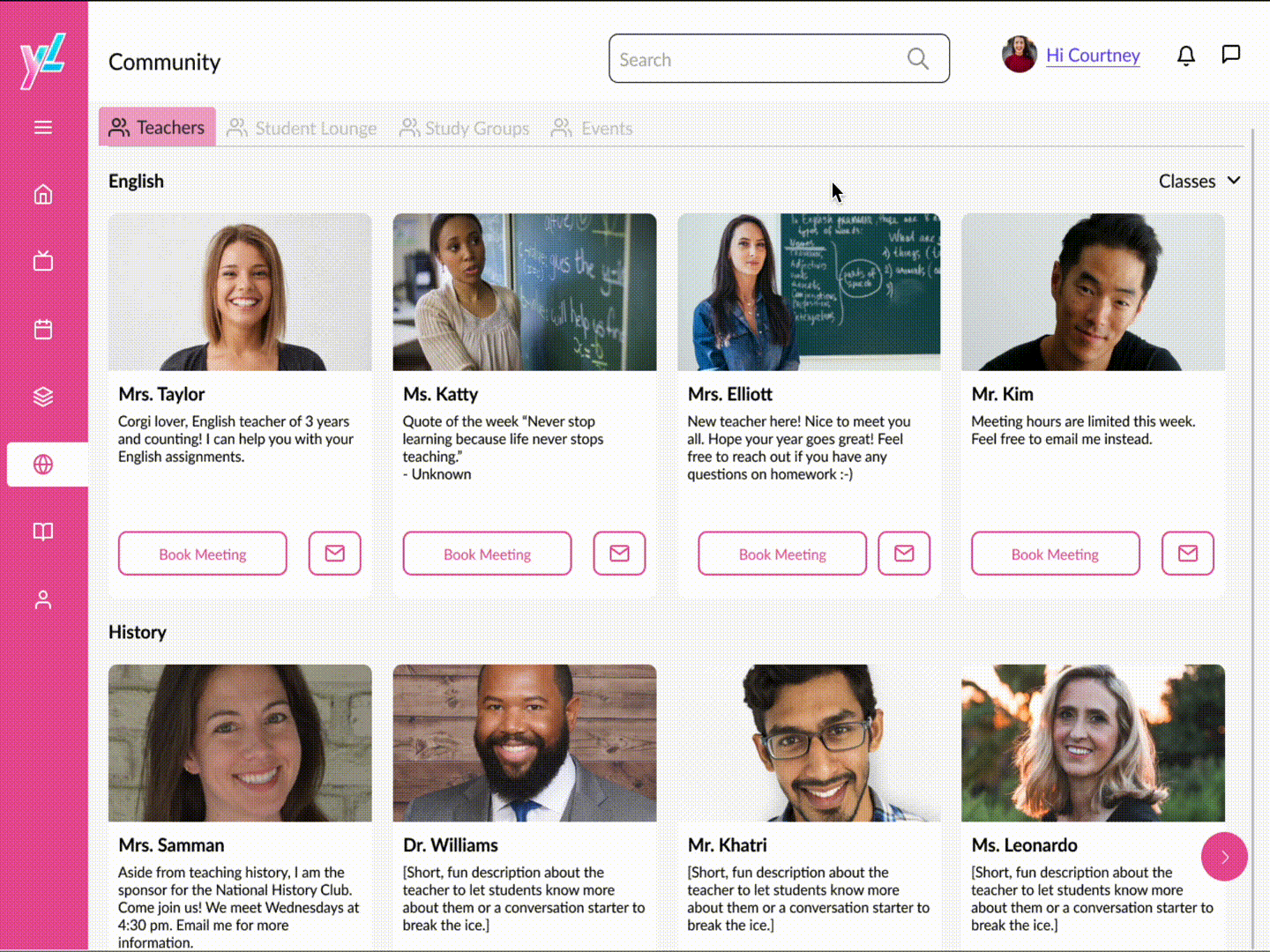
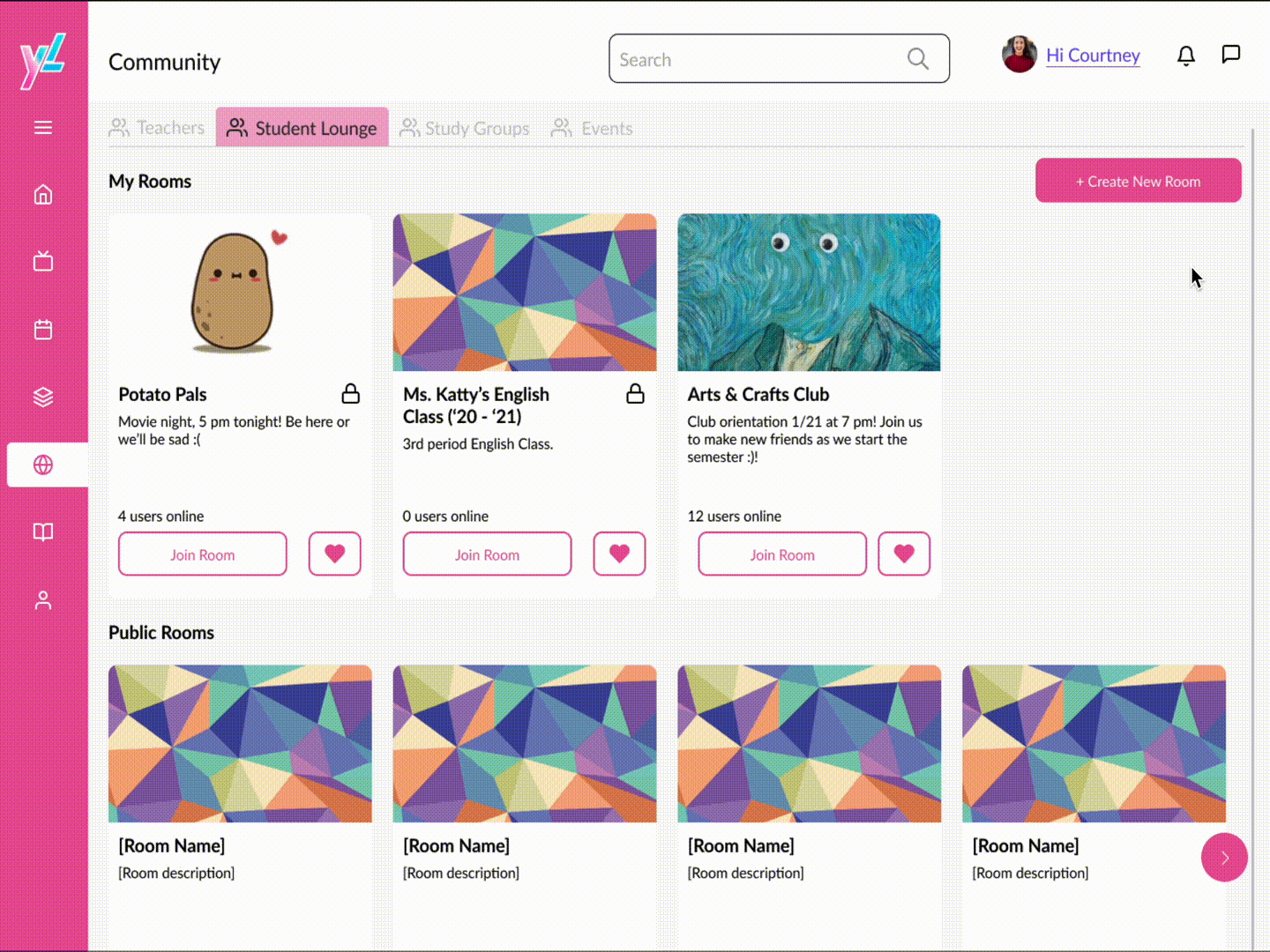
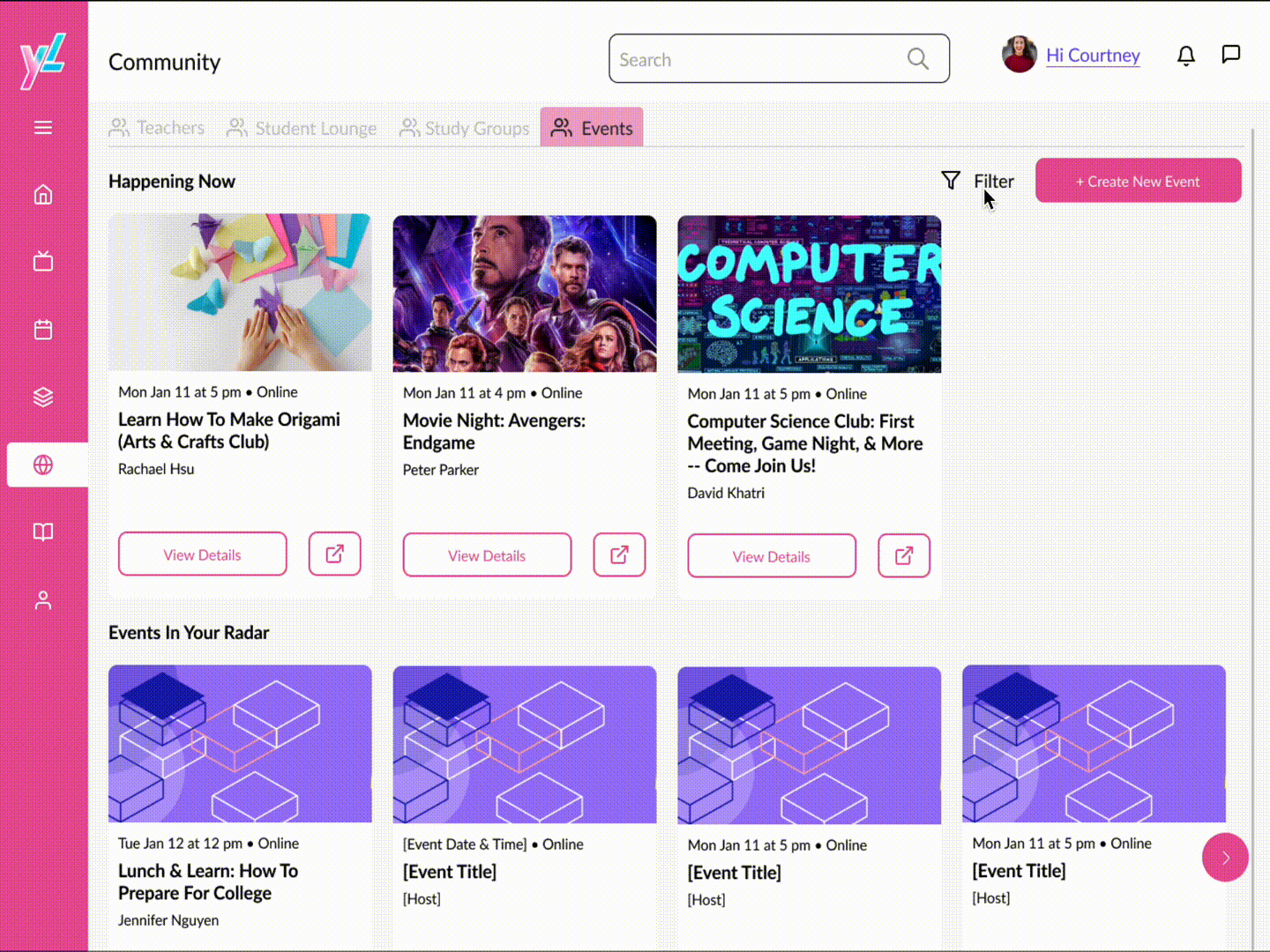
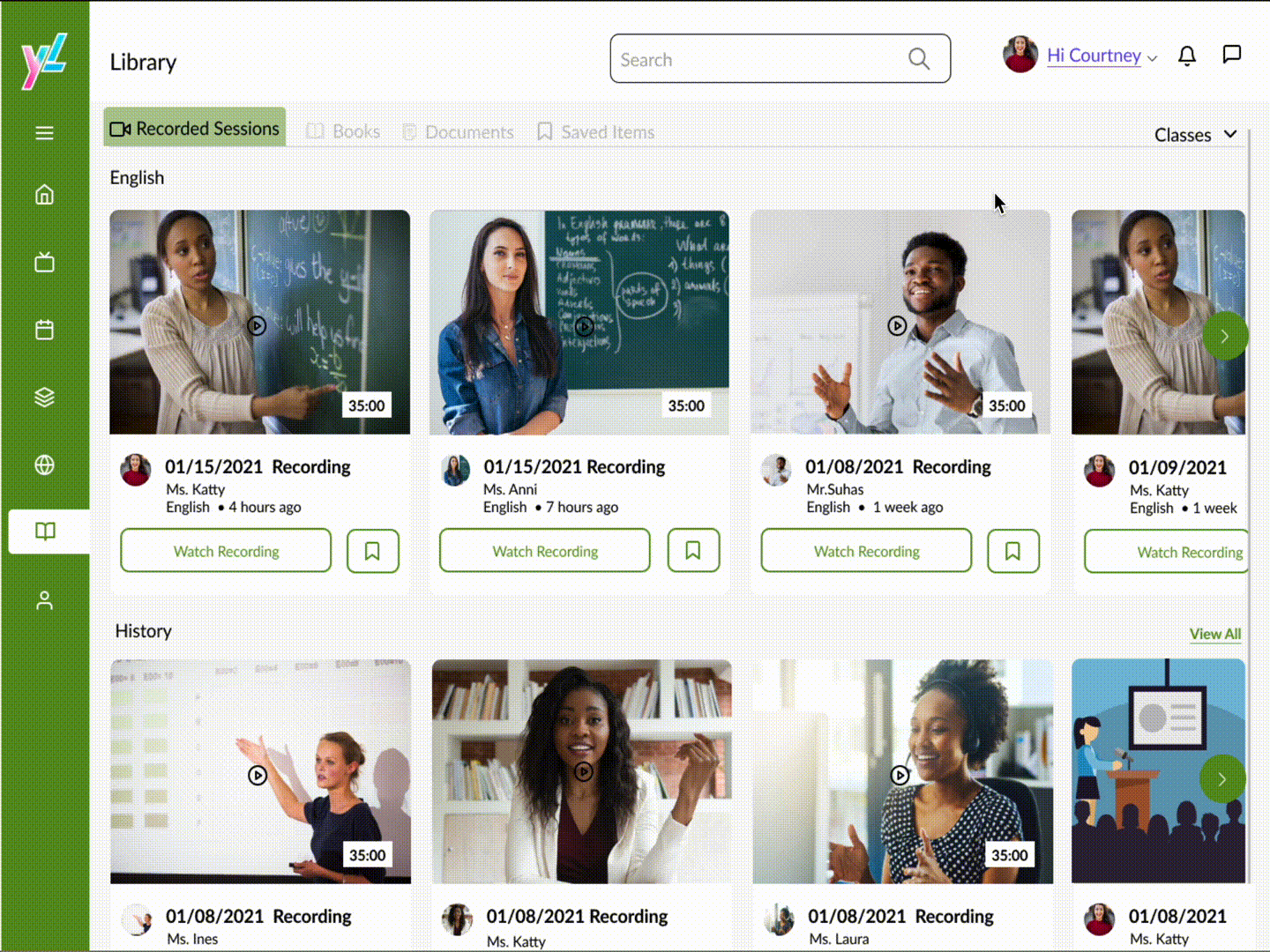
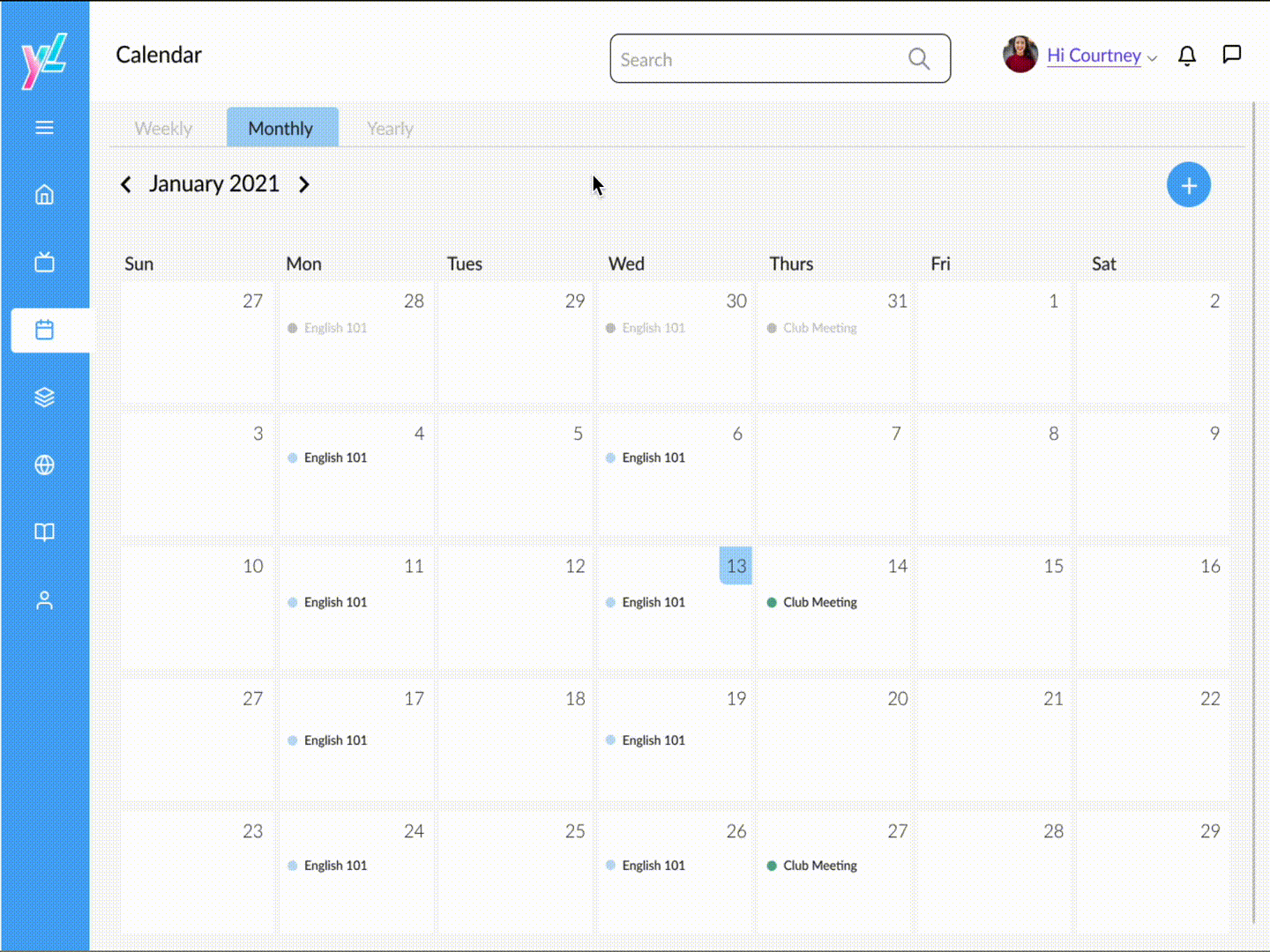
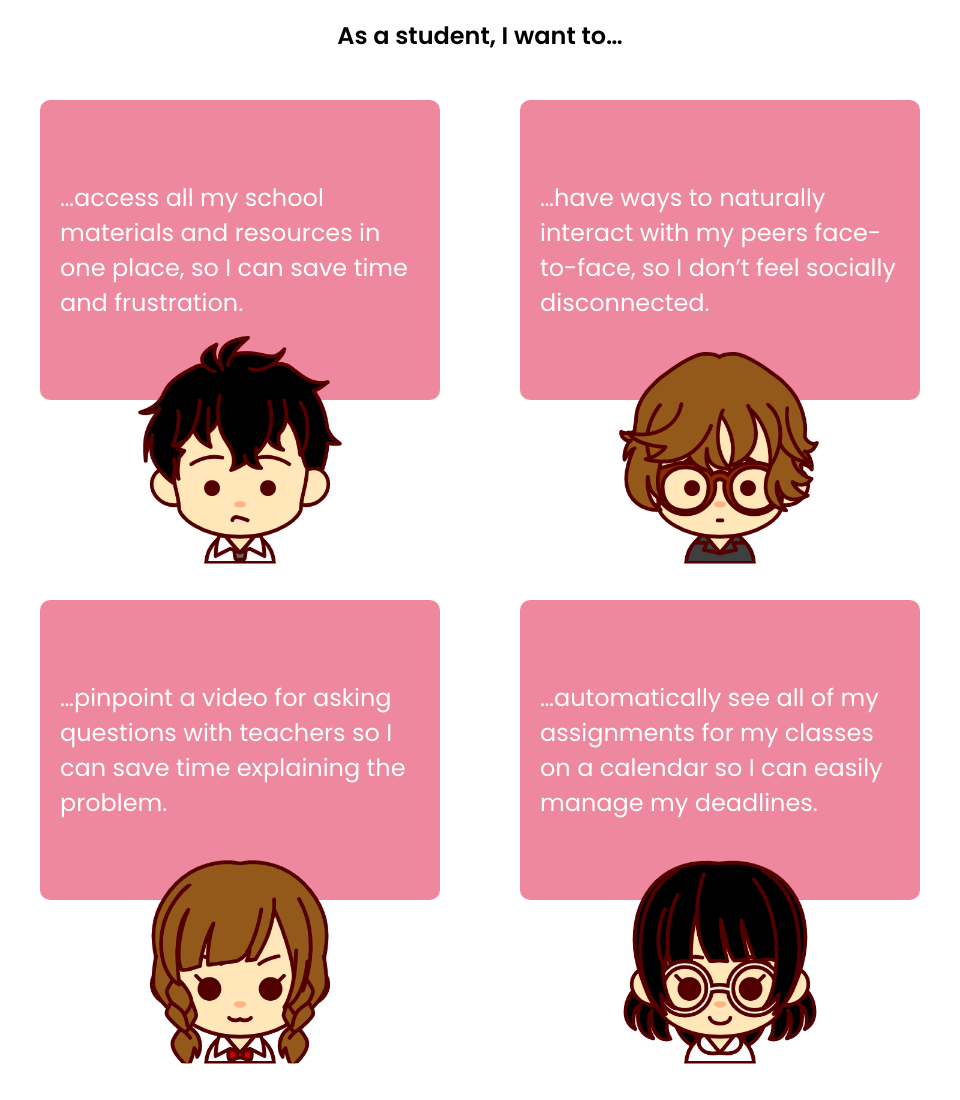 What are our competitors doing?
What are our competitors doing?

